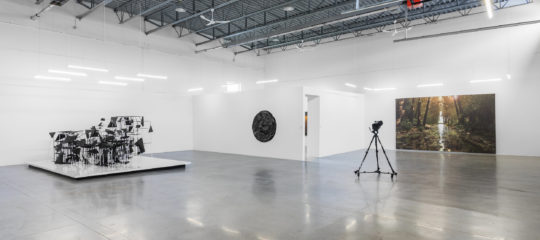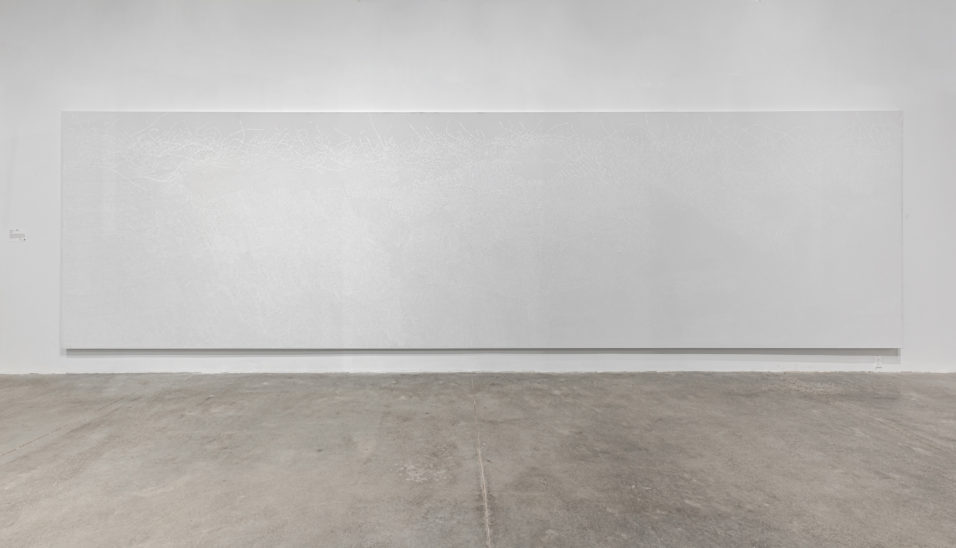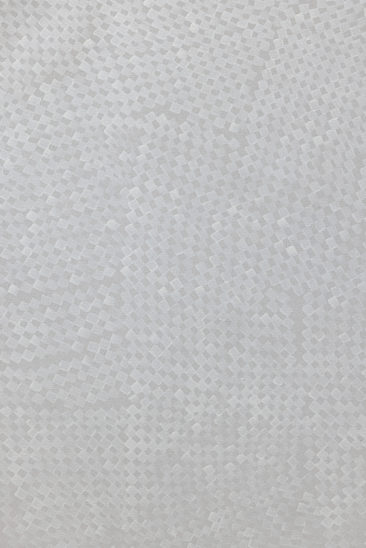Waqas Khan begins with a dot, circle, or dash, and through repetition, creates drawings that resemble elaborate webs, undulating waves, microscopic worlds, the weft and weave of textiles, or celestial fields. Trained as a printmaker at the National College of Art in Lahore, Pakistan, Waqas also experimented early in his practice with various art forms including sculpture, architecture, miniature and pointillist painting, weaving, and dance. His diverse studies and interests have influenced his ritualistic process, his works’ sensitivity to space and architecture, and concerns for the experience of the viewer. Each work involves months of quiet labour as the artist applies lead, ink, or paint with precise, repetitive movements of his hand. Working between his studio in Lahore and a family farm in Akhtarabad, a small village in the south of the country, Waqas sources many of his materials, including stretchers, canvas, and Wasli paper—a traditional handmade paper used specifically for painting miniatures—from craftspeople in the region, with whom he closely aligns his artistic practice. Like his neighbours, Waqas’ works demonstrate technical sophistication, an intimate understanding of materials, and the application of intensely focused attention, time, and physical labour.
For the 2022 Biennial, Waqas presents a newly commissioned, large-scale painting that fills an entire wall at Arsenal. Scaled specifically for this space, the artist prepared the canvas using a laborious technique that he developed in the last few years—he applies a thin layer of acrylic paint that is then sanded down before another layer is added, repeating it time and time again—to create a surface that mimics the ideal qualities of Wasli paper while enabling him to work on a much larger scale than what the Wasli paper allows. The material can also be easily rolled and transported. Waqas views his work as a process of “writing every day,” a form of record-keeping and meditation. He sees it as a form of scripted dialogue between himself, the viewer, nature, and the cosmos. The artist’s hand acts like a stenograph as he makes interconnected marks, never lifting his hand off the page, correcting, or returning to areas once completed. Changes to his environment, including fluctuating temperature, light, weather, air quality, or interactions with his family or others are reflected in the almost imperceptible alterations of each mark.
Waqas’ work cannot be compartmentalized within Eastern or Western epistemological frameworks—it is neither indebted to miniature painting nor minimalist abstraction but, rather, moves somewhere in between. Within the context of this exhibition, the work is placed in dialogue with others that examine decolonial kinship models expressed through abstract forms. Like a biological organism grown from a single cell, the marks in Waqas’ works coalesce into larger forms. They appear as particles that are at once individual and part of a greater whole. These networks reflect the complex relations of individuals within a collective, of kinships that do not reduce differentiations but are rather strengthened by interrelations across differences.
Commissioned by the Toronto Biennial of Art.
Audio Didactic:
Bio
Waqas Khan (born in Akhtarabad, Pakistan; lives and works in Lahore, Pakistan) expresses himself through multiple mediums, including drawing and installation. He takes inspiration from various elements, from architecture and miniatures to weaving, painting and dance. Waqas graduated from the National College of Arts in Lahore in 2008. He has participated in the Dhaka Art Summit (2018); the Asia Pacific Triennale 9, Brisbane (2018); and the Lahore Biennale (2018). Waqas’s work is part of public collections such as The British Museum and the Victoria and Albert Museum, in London, UK; and the Devi Foundation, New Delhi, India.
Exhibition Site
Arsenal Contemporary Art Toronto

45 Ernest Ave
Toronto ON
M6P 3M7


